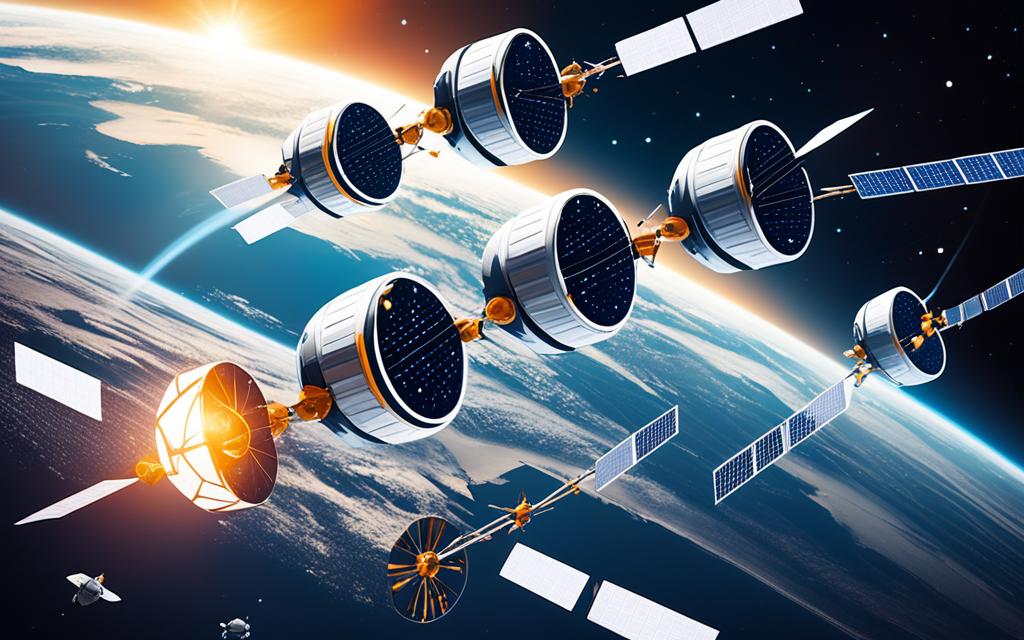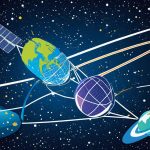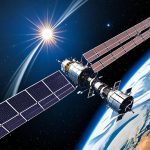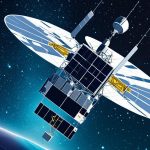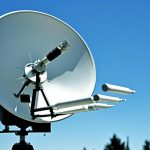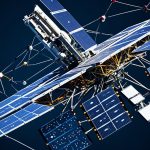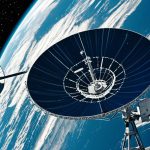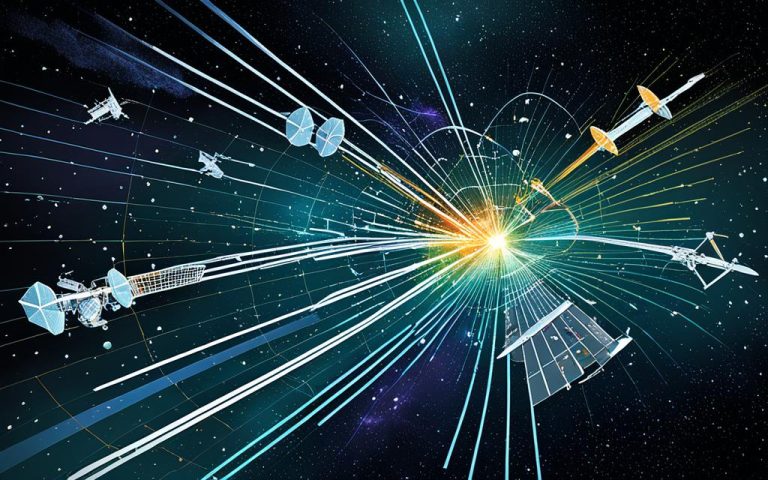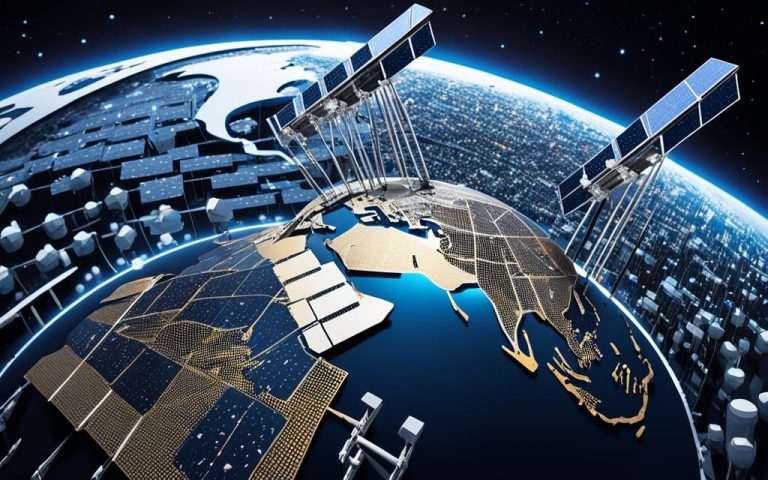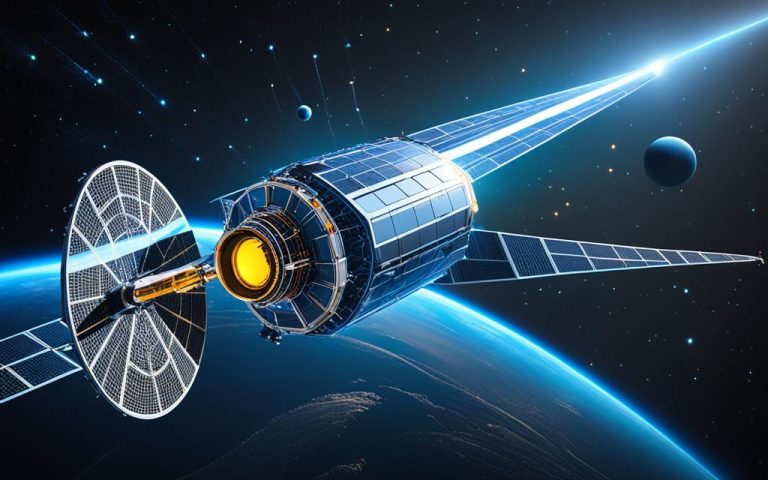The LEO satellite market has witnessed remarkable growth in recent years, revolutionizing satellite communications and enabling global connectivity. LEO satellite networks, operating in low earth orbit, have become a game-changer in the industry, providing a wide range of applications and services. Market projections indicate a substantial increase in the demand for LEO satellites, with the market expected to reach nearly $7 billion by 2031.
LEO satellite networks offer numerous advantages over traditional satellite systems. With satellites orbiting closer to the Earth, ranging from 500 to 1,500 kilometers, these networks provide reduced latency, improved coverage, and simplified deployment logistics. Companies like SpaceX and Amazon have taken advantage of these benefits, launching their own LEO satellite networks to deliver broadband internet to underserved areas and facilitate various critical operations.
The rise of LEO satellite networks has also spurred the need for skilled engineers and technologists in this field. Initiatives like the Low-Earth-Orbit Satellites and Systems (LEO SatS) project, led by IEEE, aim to coordinate industry efforts, expand existing activities, and educate aspiring professionals about the career opportunities in LEO satellite technology.
In the coming sections, we will dive deeper into the understanding of LEO satellites, explore the current market trends, analyze the challenges and concerns, and discuss the future prospects of LEO satellite networks in transforming global connectivity.
Understanding LEO Satellites
LEO satellites, short for Low Earth Orbit satellites, are a crucial component of modern satellite technology. Unlike geostationary satellites that orbit at a distance of 35,786 kilometers from the Earth’s surface, LEO satellites are positioned at altitudes ranging from 160 to 2,000 kilometers. This close proximity to the Earth offers numerous advantages and opens up a wide array of applications.
One of the key advantages of LEO satellites is reduced latency. With the shorter distance between the satellites and the Earth’s surface, data transmission times are significantly decreased. This makes LEO satellites ideal for time-sensitive applications such as video conferencing, online gaming, and real-time financial transactions.
Another advantage of LEO satellites is improved coverage. Instead of relying on a small number of geostationary satellites, LEO constellations deploy numerous satellites in orbit. This ensures seamless coverage across the entire globe, including remote and underserved regions. Companies like SpaceX’s Starlink and OneWeb are leveraging LEO satellites to provide high-speed internet access to areas that lack traditional infrastructure.
LEO satellites have also revolutionized Earth observation and environmental monitoring. These satellites can capture real-time data on climate change, natural disasters, and environmental conditions. This information aids in scientific research, disaster response, and conservation efforts.
Additionally, LEO satellites play a vital role in improving GPS accuracy and reliability. By augmenting the capabilities of terrestrial GPS systems, LEO satellites provide precise timing and accurate positioning for various applications, including navigation, logistics, and disaster management.
Overall, LEO satellites offer significant advantages in terms of reduced latency, improved coverage, and enhanced capabilities for Earth observation and GPS. Their versatility has led to their wide-ranging applications, ranging from telecommunications and internet connectivity to environmental monitoring and navigation.
Market Trends and Growth Prospects
The LEO satellite market is witnessing tremendous growth and attracting significant investments from both traditional space agencies and private companies. Market analysts predict that the global LEO Satellite Market will reach a size of $23.55 billion by 2030, with a remarkable compound annual growth rate (CAGR) of 11.9%. This growth is fueled by various factors, such as the increasing demand for high-speed, low-latency internet connectivity and the advancements in satellite technology.
Competition in the LEO satellite market is fierce, with prominent players like SpaceX, Telesat, and Amazon competing for market dominance. These companies are pushing the boundaries of innovation through cost-effective satellite manufacturing, rapid deployment strategies, and the pursuit of global coverage. Furthermore, effective regulatory navigation, competitive pricing and services, vertical integration, and partnership collaborations are integral components of their success strategies.
Advancements in Satellite Technology
The evolution of satellite technology plays a crucial role in driving growth in the LEO satellite market. Advancements in miniaturization, propulsion systems, and onboard processing capabilities have paved the way for more efficient and versatile satellite designs. These technological breakthroughs enable LEO satellites to deliver enhanced performance, improved data transmission speeds, and greater reliability.
Advancements in satellite technology are key drivers in the fiercely competitive LEO satellite market, as companies strive to create cutting-edge solutions that meet the growing demands of an increasingly connected world.
The LEO satellite market’s growth is also propelled by the increasing demand for satellite internet services. LEO satellites provide high-speed internet connectivity to underserved areas, bridging the digital divide and expanding access to information and opportunities. This transformative impact makes satellite internet a vital tool for economic development, education, and social inclusion.
To better understand the growth prospects in the LEO satellite market, let’s take a closer look at some key market trends:
| Trend | Description |
|---|---|
| Cost-effective Satellite Manufacturing | Manufacturers are continuously refining their manufacturing processes to reduce costs and improve efficiency. This enables the production of more affordable LEO satellites at scale. |
| Rapid Deployment Strategies | Companies are developing innovative deployment strategies, such as deploying large satellite constellations simultaneously using dedicated launch vehicles or repurposing existing rockets. This allows for faster and more cost-effective satellite deployments. |
| Achieving Global Coverage | One of the critical challenges in the LEO satellite market is achieving global coverage. Companies are actively expanding their satellite constellations to ensure seamless coverage across the globe, enabling global connectivity. |
| Effective Regulatory Navigation | Companies operating in the LEO satellite market must navigate complex regulatory frameworks governing satellite communications. Adhering to these regulations while simultaneously driving innovation is crucial for success. |
| Competitive Pricing and Services | As competition intensifies, companies aim to differentiate themselves by offering competitive pricing and a wide range of services tailored to the specific needs of their target markets. |
| Vertical Integration and Partnering | Vertical integration and strategic partnerships allow companies to leverage synergies and streamline operations, fostering innovation, and driving market growth. |
Challenges and Concerns
The proliferation of LEO satellites in low Earth orbit brings about significant challenges and concerns that need to be addressed for the long-term sustainability of the satellite industry. Two primary areas of concern include space debris and regulatory hurdles.
Space Debris: Mitigating Risks
The growing number of satellites orbiting the Earth poses a risk of space debris accumulation. While LEO satellites are smaller in size compared to their geostationary counterparts, the sheer volume of satellites in close proximity increases the chances of collisions and the creation of space debris. These debris particles, ranging from defunct satellites to fragments from rocket launches, can pose a threat to active spacecraft and impact the overall functioning of satellite networks.
To mitigate the risks associated with space debris, the satellite industry and international space agencies are actively exploring measures such as:
- Developing collision avoidance systems and maneuvering capabilities to ensure safe distances between satellites
- Designing satellites with propulsion systems to facilitate controlled deorbiting at the end of their operational lifespan
- Implementing guidelines for responsible space operations, including debris mitigation practices
Efforts to address space debris are crucial for maintaining the integrity and sustainability of LEO satellite networks.
Regulatory Hurdles: Navigating the Landscape
Regulation plays a vital role in governing the operations of LEO satellite networks. Companies entering the satellite industry face various regulatory hurdles, including obtaining licenses, complying with international space regulations, and managing spectrum allocation.
Spectrum allocation is particularly critical as multiple satellite operators compete for limited radio frequencies. Efficiently coordinating spectrum usage is necessary to minimize interference and ensure effective communication between satellites and ground-based systems.
Additionally, navigating the regulatory landscape and complying with licensing requirements can be complex and time-consuming. Companies must adhere to specific rules and guidelines set by national and international regulatory bodies to maintain compliance and operate legally within the satellite industry.
| Key Challenges | Impact |
|---|---|
| Space debris accumulation | Potential risks to active spacecraft and satellite networks |
| Regulatory hurdles | Compliance requirements and spectrum allocation complexities |
Table: Key Challenges in Satellite Industry
Navigating these challenges and ensuring sustainability in the satellite industry are essential for its continued growth and long-term viability. Collaborative efforts between satellite operators, regulatory bodies, and international organizations are necessary to address these concerns and pave the way for a sustainable future in space.
Conclusion
The future prospects of LEO satellite networks are incredibly promising, offering a significant opportunity to expand global connectivity and support emerging technologies like IoT and 5G. Innovations in satellite technology, such as miniaturization, propulsion, and onboard processing, are driving advancements in satellite design and functionality.
With the increasing demand for low-latency, high-speed internet connectivity, the market for LEO satellite networks is expected to continue its remarkable growth. These networks have the potential to bridge the digital divide by bringing internet access to underserved areas, unlocking new opportunities for education, healthcare, and economic growth.
However, challenges and concerns such as space debris and regulatory hurdles need to be addressed to ensure the long-term success and sustainability of LEO satellite networks. The industry must actively develop strategies to manage space debris and ensure responsible satellite deployments. Additionally, governments and international organizations must collaborate to establish clear and effective regulations to govern the LEO satellite market.
Despite these challenges, ongoing advancements in satellite technology and the increasing demand for global connectivity make LEO satellite networks a key player in the future of communications. By overcoming the obstacles and leveraging the full potential of these networks, we can unlock a new era of connectivity and empower communities around the world.
FAQ
What are LEO satellite networks?
LEO satellite networks are a system of satellites that orbit close to the Earth at altitudes ranging from 160 to 2,000 kilometers. They offer advantages such as reduced latency, improved coverage, and simplified deployment logistics.
What are the applications of LEO satellites?
LEO satellites are used for various purposes, including weather forecasting, data transmission, providing broadband internet to underserved areas, earth observation, environmental monitoring, enhancing GPS accuracy, and reliable navigation.
What is the projected growth of the LEO satellite market?
The LEO satellite market is projected to grow from billion in 2022 to nearly billion in 2031, with a CAGR of 11.9%. Companies like SpaceX, Telesat, and Amazon are key players in this market.
What are the challenges in the LEO satellite industry?
The growing number of LEO satellites raises concerns about space debris and sustainability. Regulation and spectrum allocation are also challenges that companies need to navigate to ensure long-term viability.
What is the future of LEO satellite networks?
The future of LEO satellite networks looks promising, with plans to extend connectivity to underserved areas and support emerging technologies like IoT and 5G. Advancements in satellite technology will drive innovation and growth in this industry.

